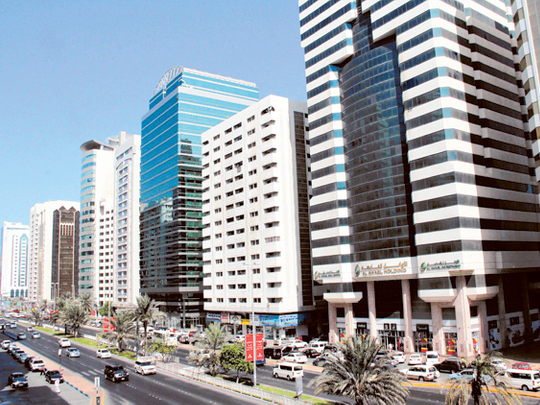
Dubai: Concerns about a persistent oversupply in Abu Dhabi’s prime office realty seem to have been grossly misplaced. Latest data from Knight Frank indicates that vacancy rates have dipped to 30 per cent in the first-half of the year — from 35 per cent in the previous six months — within the emirate’s commercial property market.
And for developers with recent releases or those nearing that stage, there is even better news. Take-up rates for premium offices in Abu Dhabi are experiencing a surge and that should continue with the favourable vibes emanating from the broader economy.
In fact, absorption within the premium space alone accounted for nearly 100,000 square metres in the first six months, with demand led by tenants in financial services and oil and gas, as well as government entities. (Knight Frank reckons that between financial services and the energy sectors, the take-up of space was 32 per cent of the overall commercial transactions recorded in the period. Government owned entities contributed another 19 per cent.)
The spike in transactions within the top-tier commercial locations took place without a concomitant rise in rental values.
But the tide did not lift all categories — Knight Frank’s latest findings suggest that rents for Grade A shell-and-core offices in the emirate actually took a dip in the first-half.
“Around 41 per cent of all recorded enquiries were for offices with a net leasable area of less than 100 square metres, while another 35 per cent were for units sized between 100 and 500 square metres,” the report says. “However, the lack of availability of Category A offices in the 100-250 square metre bracket meant that activity was lower than it would have been otherwise.”
Limited market activity
Nearly a quarter of transactional activity was for offices of 500 square metres or above.
In Dubai, the firming up of office rentals continue — on a quarter-on-quarter basis, the increases have been in the 3-5 per cent range, according to the consultancy DTZ. The year-on-year gains would be in the 25-30 per cent range, coupled with a decline in vacancy rates.
“Albeit, with limited market activity over the month of Ramadan and Eid we have seen a recent stabilisation in demand for prime office location in Dubai,” said Antony Schober, director and head of valuations — UAE ay DTZ. “Demand for high quality stock with capacity to accommodate larger corporate occupiers remains good.
“Given the current market conditions, we expect this to increase demand for secondary locations with occupiers attracted by the lower rental rate offerings. With increased supply for prime stock in the coming years, we expect rents to remain stable.”











